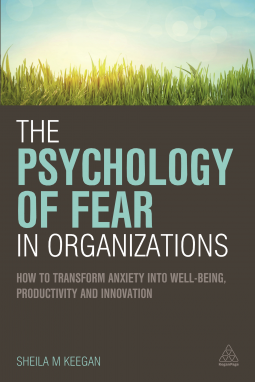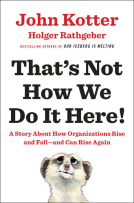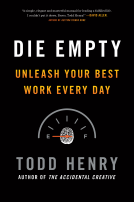
The Psychology of Fear in Organizations
How to Transform Anxiety into Well-being, Productivity and Innovation
by Sheila Keegan
This title was previously available on NetGalley and is now archived.
Send NetGalley books directly to your Kindle or Kindle app
1
To read on a Kindle or Kindle app, please add kindle@netgalley.com as an approved email address to receive files in your Amazon account. Click here for step-by-step instructions.
2
Also find your Kindle email address within your Amazon account, and enter it here.
Pub Date Feb 28 2015 | Archive Date Feb 10 2015
Description
Fear has become institutionalized in many organizations. Board directors are under pressure from shareholders. Senior executives are attempting to maintain sales in a nervous market, and many people are concerned about job security and maintaining their living standards.
In this book, Keegan uses a psychological approach to explain how fear manifests itself within organizations. She looks at how fear impacts the workforce and how, by reducing willingness to take risks, it can inhibit economic growth and innovation, at both an individual and corporate level.
She offers a practical way to harness fear and anxiety into innovation by explaining how to: understand the effects of fear within organizational contexts and how these can be reduced, incorporate small changes in behavior that will increase well-being and improve productivity by better supporting and understanding the needs of staff.
Available Editions
| EDITION | Paperback |
| ISBN | 9780749472542 |
| PRICE | $29.95 (USD) |
Average rating from 6 members
Featured Reviews
 Greg A, Reviewer
Greg A, Reviewer
Fear has been part of our every day lives. We experience this emotion whenever we detect that something bad is about to happen or while it is happening. Since majority of us spend at least 1/3 of our day at work, there is no better place to feel this but in our organizations.
Sheila Keegan presents a very insightful, thoughtful, and practical view of fear in organizations. She particularly describe this emotion against the backdrop of 2008 economic collapse. Moreover, she present a clear way for organizations to minimize the debilitating effects of fear and harness positive emotions.
Clearly, no one wants to work with or for organizations sprinkled with fear. No one wants to continuously watching his back lest someone might will kick him out of the team. It is evident that we do our best when we are genuinely happy and fulfilled.
Not to be one sided, this book explains that fear is not always detrimental. Fear, in the right amount and kind, propels individuals and group to perform well. A manager/leader just needs to know when it is appropriate to use it for the positive sustainable benefit of organization and its people.
I recommend this book especially to those who wants to inculcate an environment of positivity and innovation in organizations.
Readers who liked this book also liked:
John Kotter; Holger Rathgeber
Business, Leadership, Finance, Nonfiction (Adult)








